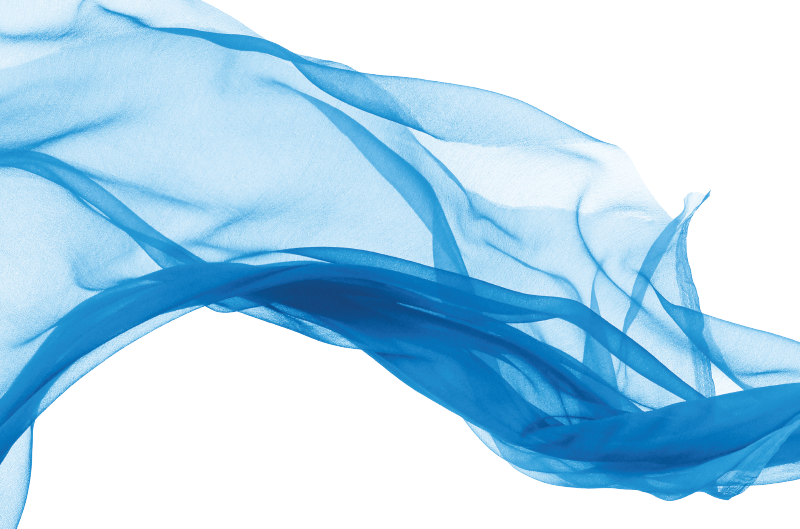Consultant Claire Goldhagen, widely admired in the furniture industry for her fashion sense and retail acumen, called the recent Showtime Fabric Fair in High Point, NC, “one of the most exciting ever for both manufacturers and buyers.” As evidence, the executive best known as the style-savvy Upholstery Merchandise Manager for Robb & Stucky during the high-end retailer’s heyday, pointed to the introductions of thousands of designs she believes will reset the bar, and the pace, in the home business well into 2019 and beyond.
Design strategist and author Mary Knackstedt concurred with Goldhagen’s assessment. “I was most amazed this market by the incredible contributions that science, technology and engineering are making in the textile field now. We’re seeing luxury fabrics for everyday use that are more beautiful, stronger and practical, and in many cases, easier to work with than ever before. Things are changing and definitely for the better.”
“Technology and fashion are colliding more and more on a daily basis,” says Amy Foster, Lead Buyer at Denver-based Furniture Row, a retailer that by all accounts has reimagined the industry’s definition of a furniture store with the opening of The Showroom @ Furniture Row, a 170,000-square-foot playground for consumers seeking great design.
“That’s the world we live in today. As technology advances, people are adapting in creative ways in all industries. We see it in fashion with 3-D printing, and we see it in fabrics and textiles.”
Let’s Take it From the Top
For the uninitiated, Showtime started out as an event aimed strictly at upholstered furniture makers. These days, the market attracts manufacturers, buyers and designers working in all major textile categories across multiple industries, with fabrics, leathers and trims designed for everything from indoor/outdoor residential upholstery to top-of-bed, accent pillows, window treatments and even luxury auto interiors.
And any doubt that Showtime is headed for the market big leagues in terms of must-see shows was dispelled earlier this spring with a brief announcement by the International Textile Alliance (ITA), organizers of the bi-annual event: Brian Casey had been named executive director.
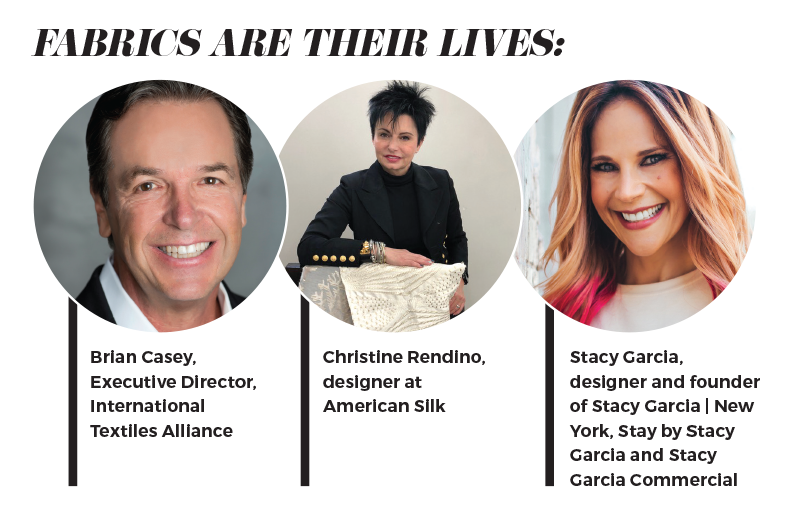
Best known to those in the home furnishings business for his role as the High Point Market Authority chief who led High Point’s turnaround during the most critical time in its history, Casey brings more than 35 years of experience in exhibition, trade show and association management duties to the role. Following High Point, he served as general manager for the Huntington Convention Center in Cleveland, and most recently led the Center for Exhibition Industry Research (CEIR) where he focused on high-level research and interpreting macro-trends in the face-to-face marketing arena.
This means his new role is something of a coming home for the executive, and while Showtime is considerably smaller in size than Casey’s previous assignments, there are obvious parallels. As he did initially at the High Point Market, the executive is already busy immersing himself in the textile industry, working to understand and define the market and to discern complementary market segments. His mission is to set the stage for future growth opportunities for both the event and ITA as a membership-driven, not-for-profit organization.
“Right now, it’s about setting a baseline with our data for measurement and analysis because markets are continually evolving, and it’s important not to make assumptions without valid information,” he relates. “The key to what’s happening in the face-to-face marketing field is that you really have to pay attention to the experiential things and view it from a design standpoint, something I learned from Canadian designer Bruce Mau, Chief Design Officer at Freeman. A guru in the design field, he says that in business now, we are all designers. As he says, ‘If we fail to design, we design to fail, so in effect, we are all designing whether we know it or not.’ If we design a market experience for the outcome we want to achieve, we will create an experience that resonates, along with a platform for growth.”
Speaking of Great Design...
In the showrooms this season, among the designers creating swoon-worthy experiences and buzz was Christine Rendino at American Silk. The industry veteran, former Director of Design at fashion leader Marge Carson, showed off her inspired luxury collection aptly named Sprezzatura Home (Sprezzatura is an Italian fashion term meaning effortless elegance).
“The idea was to create a collection that reflects the luxury, style and trends of the couture runway,” Rendino says, “while staying grounded in the classic sensibilities that are so important to the modern home textile industry.” Divided into couture color collections, each fabric showcases a variety of textures, materials and patterns designed to work together, but with the strength to stand alone.
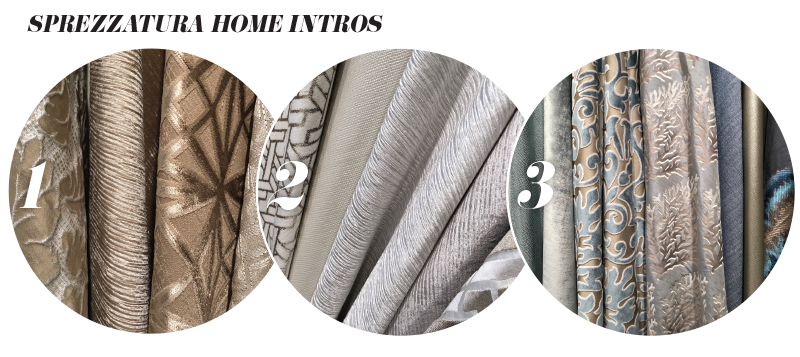
2. 50 Shades of White unexpectedly combines a modern basketweave velvet in matte white with metallic taupe. A linen embossed pearl-colored vegan leather provides a textural contrast to the plisse velvet. The final pattern is a modern jacquard with sophisticated weave effects that add dimension and interest.
3. The Blues color collection features a wide range of patterns, textures and colors. There’s a fine chenille with a heat transfer print in a croc pattern, a beautiful cut velvet damask in sky blue, a textural jacquard with an ombré coral pattern, a luxurious cotton blend chenille, metallic gold vegan leather and a striking embroidery in Mediterranean colors on linen.
Inside the Crypton showroom, internationally renowned product designer Stacy Garcia debuted her new Pattern Play Collection featuring colorful, transitional prints designed for layering. Intended for the style-centric consumer, she described the fabrics as “refined, yet livable for the everyday.”
The base fabrics for Garcia’s new prints have a significant appeal that is further enhanced by a textured look within the mix-and-match designs, achieved through techniques such as a painterly, almost distressed watercolor effect and an artisanal block-printed look. (Think classic medallion motifs with a twist). Overall, the fabrics have a soft, brushed-cotton hand or a slubby, varied, linen-like texture.
“Most people are not aware that I’m actually a surface pattern designer by training,” says Garcia, who is both Founder and Chief Inspiration Officer of her eponymously named global lifestyle brands and Owner of LebaTex fabrics. (She has previously created several highly successful performance fabric lines with Crypton on the contract side).
“It’s been really fun to come at this from a purely decorative perspective. We went a little more transitional modern with the aesthetic because that’s what speaks to how I live and how I believe the next generation of homeowners is living. Even the Boomers, when you look at how they’re living, are gravitating toward more modern looks because they don’t want to feel old. My own grandpa is running around in skinny jeans, and in his mind, he’s still riding his motorbike around the Village following bands. Seriously, though, the kids are gone, and Boomers are selling their homes and downsizing, and they want to be able to lock their doors because they travel.”
Bravura Performance
“Stacy’s style with thoughtful twists on the traditional, sophisticated palette and playfulness speaks to our core audience perfectly,” said Jack Eger, Senior Vice President at Crypton.
Beyond Pattern Play, product designer Janna Sendra says many of Crypton’s offerings this season are a reaction to the marketplace’s focus on self-care, “wherein home becomes a place of comfort, luxury and solace. This helps explain the demand for hyper-soft fabrics. People want plush, comforting fabrics to nestle into.”
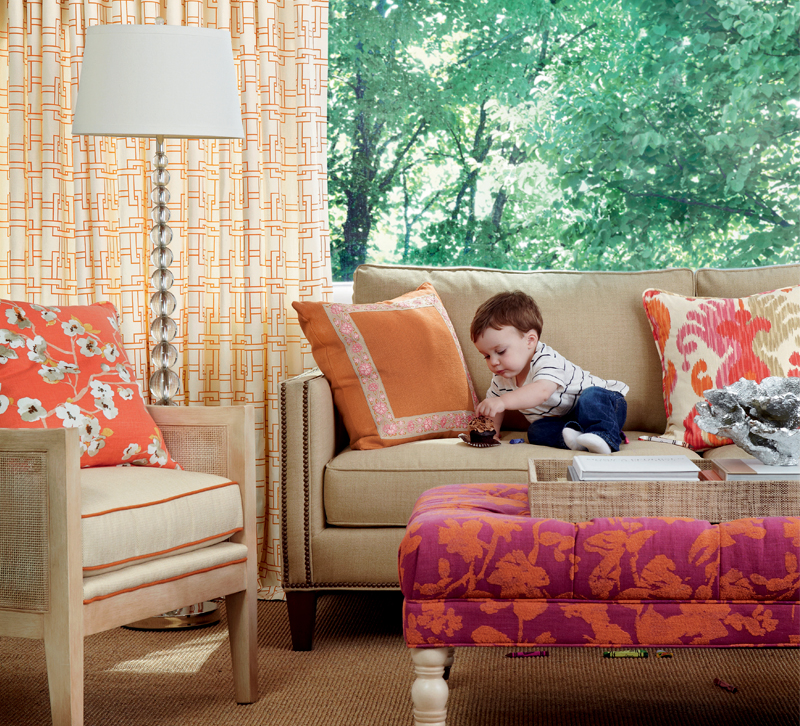
If the number of introductions in Showtime’s showrooms focused on performance were any indication, more and more consumers now expect their soft, plush fabrics to be care-free, too. Says Ronna Griest, Design Director at better-end upholstered and leather furniture maker Paul Roberts, “It used to be the category was just about kids and watching TV, and now I think it transcends all layers. If you have a maid to clean up for you, you may not be as concerned about performance, but the rest of the world definitely is.”
Even at the luxury level, Foster says, “I think, in America today, we are getting more and more casual, and comfort is the big thing. Here in Colorado, long known for mountain living, we’ve seen a shift in design elements over the last 10 years. It’s no longer moose and antlers; it’s a sophisticated, modern look with textures. It’s laid back. We’re seeing it in the depth of sofas and in the rise of performance fabrics.” She laughs and adds, “One hundred thousand people move here every year, and they are issued a dog and a Subaru at the state line.”
As Goldhagen reported, “I was left with a distinct impression of how important performance fabrics are in today’s upholstery business. Sunbrella expanded the Joe Ruggiero Collection with new patterns using handcrafted techniques and textures in multiple colorways. Valdese Weavers expanded two major upholstery programs — Sustain® and Inside Out® — and Milliken introduced Breathe®, a collection of eco-elegant sustainable fabrics in natural fiber and polyester featuring plant-based stain-repellant versus harsh chemicals. And fabric manufacturer STI featured an extensive program in chenille yard in Revolution®, also adding patterns in Revolution Plus®, its line of fabrics for washable slipcovers. They also made available a smart, practical fixture for hanging swatches designed for retail floors with their own selection and a cut-yardage program as well.”
The eco-stories are welcome news in textile production, which accounts for more toxic waste pollution of water than any other industry.
“That fact made me pay more attention this market to the tremendous innovations made by so many U.S.-based textile manufacturers, and I see the story as an opportunity to grow sales at the retail level,” Goldhagen says, “and the Sustainable Furnishings Council is a wonderful resource to help guide retailers.”
“In today’s modern home, there simply isn’t a reason to compromise on the livability of sofas, chairs, dining chairs and upholstered beds,” remarks Doug Rozenboom, Senior Vice President of Product Merchandising and Marketing at A.R.T., adding that the popularity of dark finishes on floors has spawned trends in lighter wood and upholstered furnishings as a contrast and pop in room settings. “The more these lighter colors and fabrics are used, there is a need for a new level of protection from what happens in normal living: feet on the ottoman, spills and, well, just casual life.”
Rozenboom points out that until recently, performance fabrics were more tightly woven, less breathable and available in fewer colors and patterns than non-performance offerings. “Today, practically anything is possible since there are many techniques to protect the fabric. Chunky wovens and linen looks are great examples.”
Where once the fabric protection story was mainly about durability, improvements in hand and the plethora of new entrants in the field means that when it comes to performance fabrics today, performance means different things to different people, with varying degrees of water and stain-resistance, cleanability, fade-resistance, mildew-resistance, indoor/outdoor usage, eco-friendly issues and made-in-America stories. Different though they may be, all those product attributes deserve to be shared with manufacturers, retailers and, ultimately, consumers.
The good news, Goldhagen says, is that fabric companies are producing plenty of great marketing materials to communicate the benefits, from printed collateral to point-of-purchase banners, posters and hang-tags for the merchandise. And since performance fabrics offer truly demonstrable benefits, there are also plenty of videos available starring adorable children and dogs, red wine, magic markers and spaghetti sauce to help get the point across. This is a potential boon for “furniture manufacturers who now have the necessary and valuable resources supplied to them to be able to pitch the performance fabric story to their retailers, and that in turn is a huge opportunity for the sales associates and designers on a store’s sales floor to educate their customers.”
Of course, the question remains whether retailers will use all the smart and inviting marketing materials seen at Showtime. Given the speed at which technological advances are being made in the category, all the competing brand messages can admittedly lead to confusion even among the most astute students of the game, and many retailers who typically sell furniture from numerous manufacturers wearing a number of different performance brands are reluctant to pepper their floors with competing messages. To keep the emphasis on their store’s brand in their marketplaces, some, like Calico Corners and City Furniture for example, are lately taking steps to produce their own store-branded performance fabric messaging.
“We’ve been carrying Sunbrella for a couple of decades,” relates Julie Mihuc, Director of Marketing and Visual Merchandising at Calico Corners, which has 65 locations across the country and offers a whopping 10,000 fabric SKUS, of which 1,000 are performance fabrics. “In our world, customers are using performance fabrics on furniture and bedding, but also on window treatments, especially families with kids because you don’t have to worry about kids grabbing onto the draperies. For years, we have co-branded with Sunbrella, but we also sell Crypton and now a few others, and not all of them are recognizable consumer brands. So, we have begun to characterize the fabrics as Calico Performance. Where once we had a sort of one-pager that was a comparison chart, we just finished creating a 20-page brochure for use on the sales floors.”
Calico Corners Fabric Buyer Jennifer Mayer, the retailer’s in-house expert on the subject, says, “The brochure highlights all the different brands that we sell and what differentiates them, along with a comparison chart and a cleaning guide to make it easy for shoppers to satisfy their personal needs.”
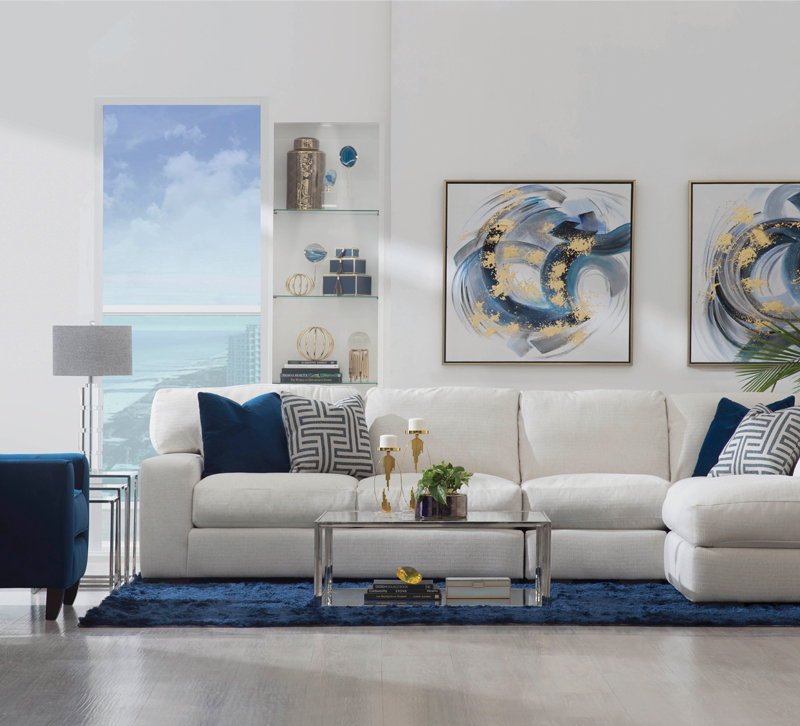
Keith Koenig, President of City Furniture, a leading furniture chain in South Florida, says consumers in his stores rarely walk in asking for performance fabrics.
“They want style inspiration, color inspiration and fashion inspiration. So, they don’t shop for a performance fabric, they shop for furniture they are going to fall in love with. But they also have needs and concerns, especially those that may want a lighter-colored sofa who are afraid they won’t be able to keep it clean. Cleanability is a real benefit to those customers, and it’s one that creates an opportunity for clear demonstration, and demonstration is the heart of a good presentation.” For this reason, salespeople on City’s floors are equipped with iPads, and “it’s a powerful tool loaded with a video that demonstrates STI’s Revolution fabric. This morning, I was in a meeting with our merchandising team, and we decided that we need to customize it and brand it for ourselves, and we’re going to do our own quick version of it.”



